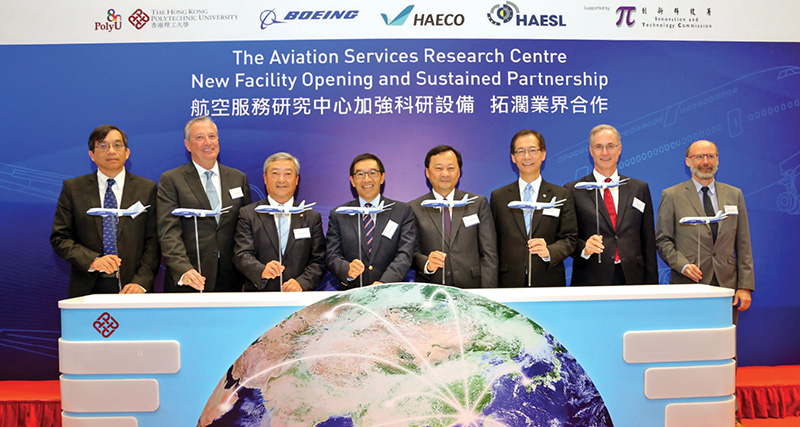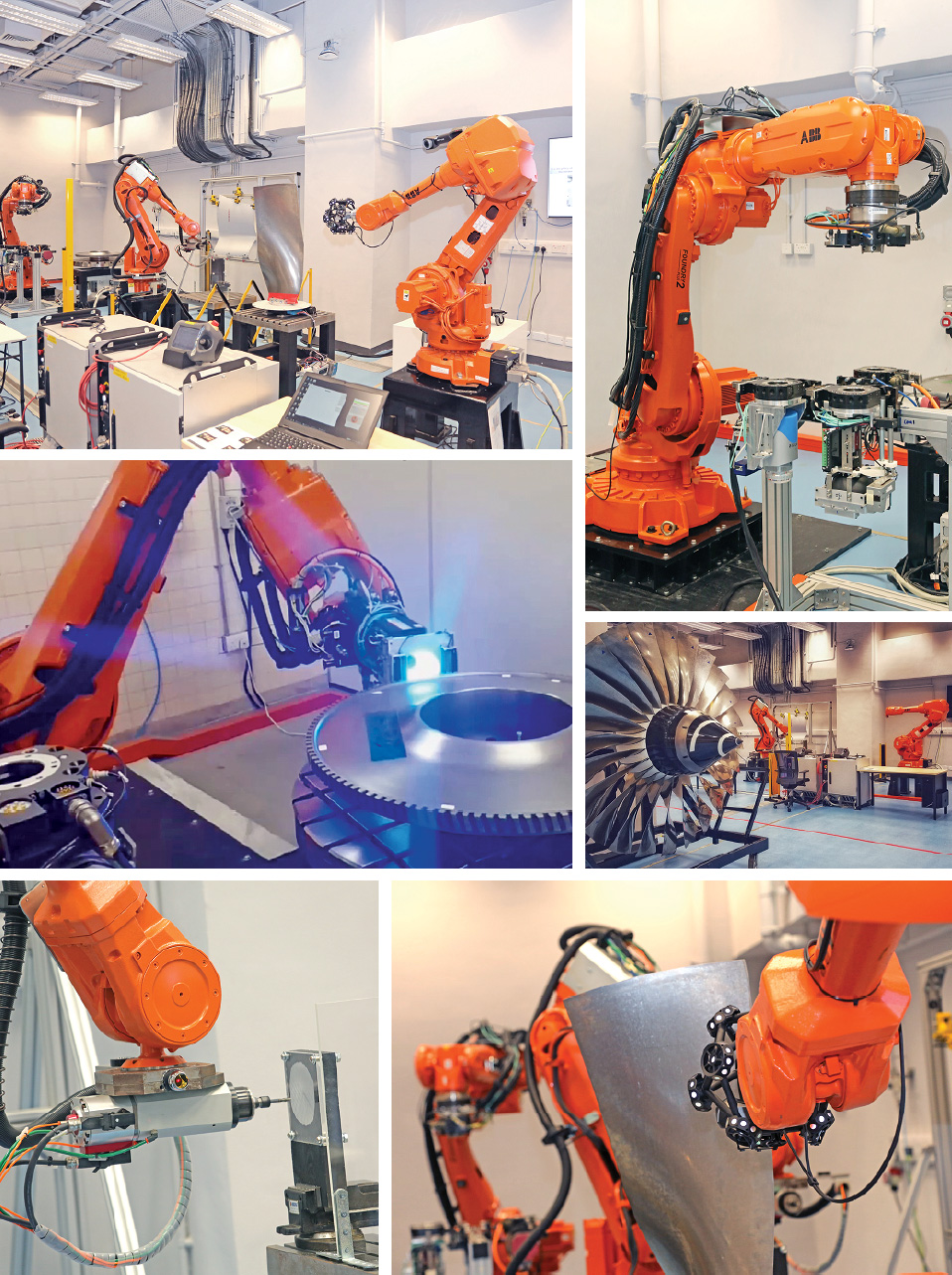
(from left) Mr Augustus Tang, Chief Executive Officer of the Hong Kong Aircraft Engineering Co. Ltd; Mr Dennis Floyd, Vice President for Strategy, Boeing Global Services of the The Boeing Company; Mr Chan Tze-ching, Chairman of PolyU Council; Mr Carlson Tong, Chairman of the University Grants Committee; Prof Benjamin Wah, Chairman of the Research Grants Council; Prof Timothy W. Tong, President of PolyU; Mr Angus Barclay, Director and General Manager of the Hong Kong Aero Engine Services Limited; and Mr Clemens Ziegler, Director of Business Development Component of the Guangzhou Aircraft Maintenance Engineering Co., Ltd.
New facility strengthens research capabilities
Since 2012 and its phase 1 opening in Block W, the ASRC has provided world-class MRO solutions by leveraging Boeing’s industry knowledge and PolyU’s academic research expertise for the sustainable growth of the aviation industry across the Chinese mainland and Southeast Asia. Its technological solutions are used by MRO service providers to improve maintenance activity through solutions such as reducing the turnaround time for engine seal and turbo fan blade repair.
With the opening of a dedicated 1,500-square-metre facility and the addition of equipment valued at over HK$35 million, the Centre is set to further advance the industry. “The cutting edge research and engineering facilities specially dedicated to the ASRC in this redeveloped building will further support the delivery of new technologies”, said Mr Chan Tze-ching at the opening ceremony. “We can surely expect a win-win situation in which PolyU, our partners and the Hong Kong aviation industry as a whole will benefit”.
That has certainly been the case so far. The ASRC’s 24 staff members have been hard at work delivering new automation technologies, which has led to improved service quality, streamlined workflows, reduced costs, and thus enhanced industry competitiveness.
Researchers at the centre are currently conducting more than a dozen research and development projects on the non-destructive testing and automated scarfing of composite airframes, residual stress analysis and automated defect inspection and analysis. They have also recently completed the highly innovative surface defect detection and removal (SDDR) project.
Light dents and scratches on critical rotating aircraft parts – such as compressors and turbine discs, which have complex shapes and various sizes – have traditionally been inspected with the naked eye aided by flashlights and then repaired manually with air-powered polishing tools. Such work is extremely time-consuming and prone to human error, which limits MRO performance in terms of cost, time, and quality.
The SDDR project combined robotics and artificial intelligence to improve every aspect of this process. The novel technology developed can scan and analyse light damage to critical rotating parts using robots to conduct illuminated scans of complex components, identify damaged areas, marking them and then repairing them with artisan-level workmanship. This automation significantly shortens the process from the 4 hours required by the manual method to just 1.5 hours, and it produces more consistent workmanship and accuracy, thus significantly reducing the cost of the process.
Other recently completed projects include the automation of coating, marking and recording processes, the development of intelligent MRO business management systems, a feasibility study on optimising a modular wing docking platform and the automation of a process to efficiently manufacture metallic and composite aircraft components.

Equipped with state-of-the-art research and engineering facilities, the ASRC has developed various technologies for the aircraft MRO industry.
